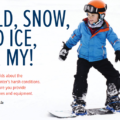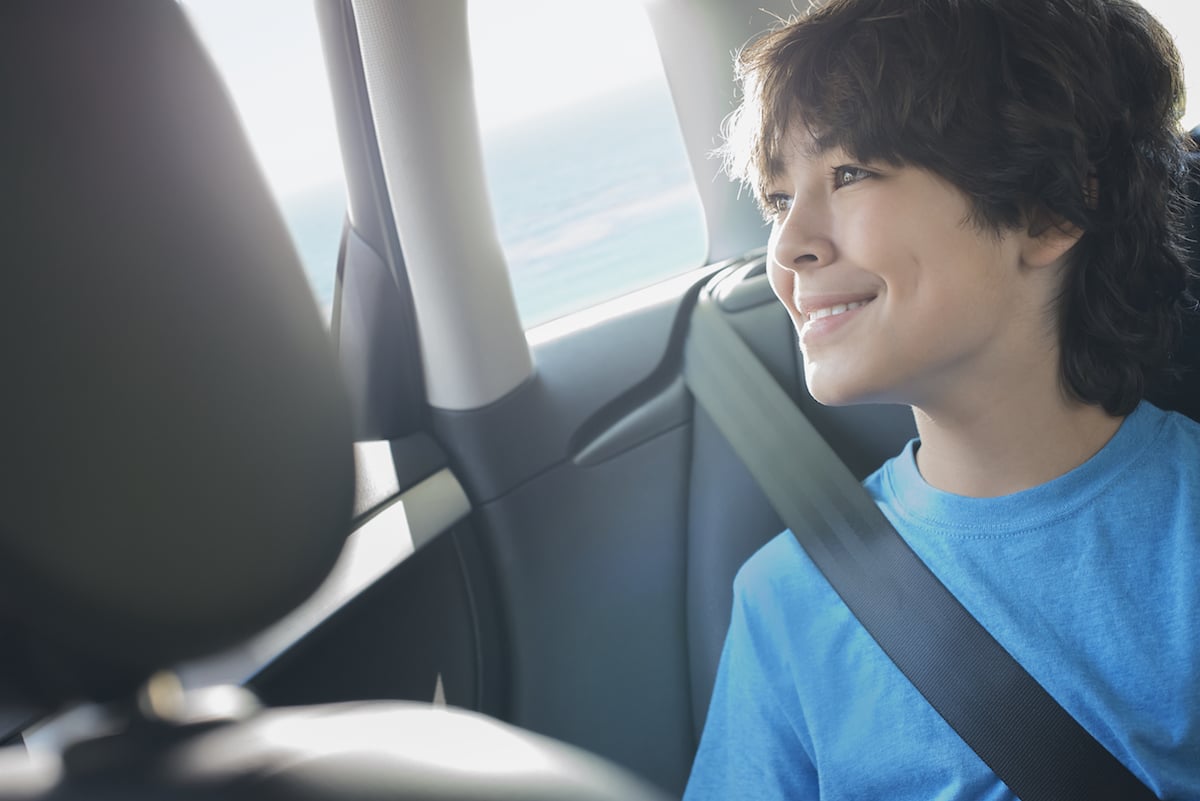Mindfulness anytime, anywhere
Sarah Rudell Beach, the founder of Brilliant Mindfulness of Minneapolis, offered six ideas for trying mindfulness activities:
Mindful breathing: With young kids, play with different kinds of breathing. Can you breathe like a lion? Like a bunny? Like a dragon? Like a horse?
Mindful listening: With your eyes open or closed, set a timer for one minute and ask everyone to sit quietly and listen. After the timer goes off , talk about all the sounds you could hear. This activity helps teach concentration (focusing on sounds/listening, instead of getting distracted), and helps kids realize there’s a lot that we often miss when we don’t pay attention. You can also ask children how it feels to just be completely still and silent for one minute.
Emotion charades: Help kids understand their own emotions and those of others by acting out an emotion. Let everyone else guess what it is.
Mindful walk: Go for a walk around your neighborhood. Can you fi nd five things you’ve never seen before?
Gratitude: Take a few minutes and talk about what you’re thankful for.
Gratitude is all about mindfulness: It’s about appreciating what is here, right now, in front of us.
Mindful breathing for teens: Teens often like to use apps for mindfulness. Two great ones for teens are Calm and Stop, Breathe, and Think. When your teen practices mindful breathing, have
her try to notice her breath first in her nose, then her chest and then her belly. Encourage her to breathe for a few minutes, just noticing where in the body it’s easiest for her
to sense the breath.
It’s 11:55 on a Tuesday morning and Jennifer Gervais sits at the front of a class of second- and third-graders at Valley Crossing Elementary School in Woodbury.
“When I say focus, you say focus,” she says.
“Focus!” the group responds eagerly.
“I have citrus this week,” she tells students while holding a small brown spray bottle filled with an essential oil blend. As she walks around to each table, students hold out their hands if they would like a spritz, and fold them in their lap if not.
The juicy scent of ripe orange fills the room, and then it’s time to begin. Students take a deep breath, inhaling the sweet fragrance from their palms. Gervais rings a small hand chime. The sound resonates for a few moments while the students quiet.
Gervais — a social worker at the school — is leading a weekly 20-minute Yoga Calm sequence. The class starts with deep-breathing exercises. She slowly expands and contracts a Hoberman sphere breathing ball, which serves as a visual guide. A calm instantly blankets the class.
Next up is yoga. This week students are practicing while seated. They start in mountain pose, with feet grounded and hands at their sides. They breathe deep and raise their hands to the sky transitioning into extended mountain pose before exhaling into a forward fold. The kids slowly rise and then Gervais instructs them to place their hands at heart’s center.
“Think of someone you love. Send them healthy thoughts,” she says.
They go through this flow several times.
For the final minutes of the session, students double-stack their fists on the table and rest their heads on their hands in what’s called seated child’s pose. It’s time for a meditation reading, and today Gervais has selected a passage about mighty trees and feeling powerful on the inside and out.
Finally, the chime rings again and kids lift their heads. She congratulates them on completing the longest mediation session they’ve done yet. The kids grin enthusiastically as she tells them next week they get to try new poses — boat, cat and cow.
A school-wide program
Sessions like these happen regularly throughout the K–5 school. Gervais teaches 12 Yoga Calm classes a week to students, but many more occur when the teachers lead the sessions themselves. (More than half of Valley Crossing teachers are trained in Yoga Calm.)
These sessions are part of the school’s bigger focus on mindfulness and self-regulation. Gervais and her colleague, Tyra Raasch, have worked together to develop a school-wide program with a goal to empower students. Other core parts of the program include Social Thinking and Zones of Regulation. As part of the program, each teacher is encouraged to have a calm space in the classroom students can visit when they need to self-regulate through various activities such as deep breathing or silent counting.
“Students are taught that no emotion is bad, rather, how they can deal with that emotion appropriately,” Raasch said.
This speaks to the core of what it means to be mindful.
Sarah Rudell Beach, a former Twin-Cities-based schoolteacher and founder of the mindfulness training organization Brilliant Mindfulness of Minneapolis shares her definition: “Mindfulness is paying attention to the present moment, with curiosity and kindness. When we are mindful, we are aware of what we’re doing as we do it, and what we’re thinking as we think it. We bring an attitude of kindness to our experience, so if we notice that we are sad or upset, we don’t try to push our feelings away or tell ourselves we shouldn’t be feeling that way; instead, we offer ourselves kindness during that tough moment,” Rudell Beach said.
Being mindful can be as simple as deliberately sitting down and paying attention to your breathing. When your attention drifts, you slowly bring it back to your breath.
“We can also be mindful throughout our day, simply noticing what’s happening, what we’re thinking, what we feel in our body or what emotions are present,” Rudell Beach said. “When we bring this kind of attention to our experience, we can eat, drive, do the dishes or play with our children mindfully.”

Modeling mindfulness
This type of calm focus on the present moment seems in stark contrast to the busyness that often plagues modern life. Digital devices, overwhelming extracurriculars and social demands have made many kids busier and more distracted than ever.
“I think we can say that based on a cultural, perhaps global, tendency to simply keep adding more things — more technologies, more activities, more choices — many kids now lead lives that have very few gaps in them,” said Marc Anderson, founder of the St. Paul-based M2 Foundation, which offers mindfulness training in schools.
Of course, most adults’ lives aren’t any better.
“Adults model the behavior,” Anderson said. “We fill our lives with stuff, activities, jobs and leave the most important jobs of inner peace, well-being and community connection on the back burner. Kids get the message, and they follow our lead.”
In addition to parents being role models, teachers can have a big impact, too.
“A significant portion of my work is providing mindfulness training to teachers,” Rudell Beach said. “There’s now a growing body of research demonstrating that when teachers practice mindfulness, it has a positive impact on their students, even if the teachers don’t teach mindfulness to the kids. If teachers can manage their own stress, and be fully present with their students, it improves their relationships with students and, amazingly, can actually improve student behavior in the classroom.”
Reaping the benefits
Rudell Beach has conducted mindfulness training with teachers and students at numerous Minnesota schools, including in the Wayzata and the Anoka-Hennepin school districts.
“Students tell me that mindfulness helps them feel calm and relaxed and that they use it to help them fall asleep at night, to calm down when their siblings anger them or to focus when they are worried about a test,” she said.
Research indicates that mindfulness activities help kids improve their concentration and focus, decrease stress and anxiety, increase self-awareness and impulse control, and calm them when they’re upset.
“In short, mindfulness can help them develop the executive functioning skills that all children and grownups need,” Rudell Beach said. “There are also some indications that mindfulness can help improve sleep as well as children’s conflict-resolution skills.”
At school and at home
It was apparent that the Valley Crossing students in Gervais’ class had embraced the idea of mindfulness wholeheartedly. They all willingly participated and were remarkably focused.
But how have parents responded to the program?
“Parents love the attention we’re giving to mental health,” Raasch said. “We’re addressing it in a non-confrontational way. It helps support social and emotional development, both at school and at home.”
Raasch and Gervais have developed resources for parents so they can extend mindfulness and regulation activities into home life. They’re encouraged to use the same language and terminology that their kids are hearing at school to make it as easy to do at home as it is in class.
While mindfulness initiatives like these are available at some Twin Cities schools, it’s still a new concept at many. There are numerous barriers to implementing programs, including administration constraints, funding and lack of teacher buy-in.
Without everyone on board, a program like Valley Crossings’ would be impossible to implement, Gervais said.

Fortunately, mindfulness is something you can do at home, even if your child’s school doesn’t currently have a program. Rudell Beach recommends starting with kids who are 3 or older, noting kids younger than that are actually already inherently mindful.
“We could learn some lessons from them about being totally engrossed in the present moment and not letting past regrets and future worries trouble us,” she said. “Executive functioning skills develop throughout our life, but early childhood (ages 3–4) and early adolescence are the two critical periods when these skills develop rapidly, so kids at those ages can especially benefit from mindfulness.”
RESOURCES
• Brilliant Mindfulness, Minneapolis, brilliantmindfulness.com
• M2 Foundation, St Paul, m2foundation.org
• Valley Crossing Elementary School, Woodbury, self-regulating curriculum resources, tinyurl.com/mindful-valley
• 1000 Petals, a local mindfulness and movement training company that works with teachers, counselors, therapists and parents, 1000-petals.com.
Laura Malm is a writer, editor and storyteller who lives in Woodbury with her husband and two daughters.
Photo courtesy of 1000 Petals
























